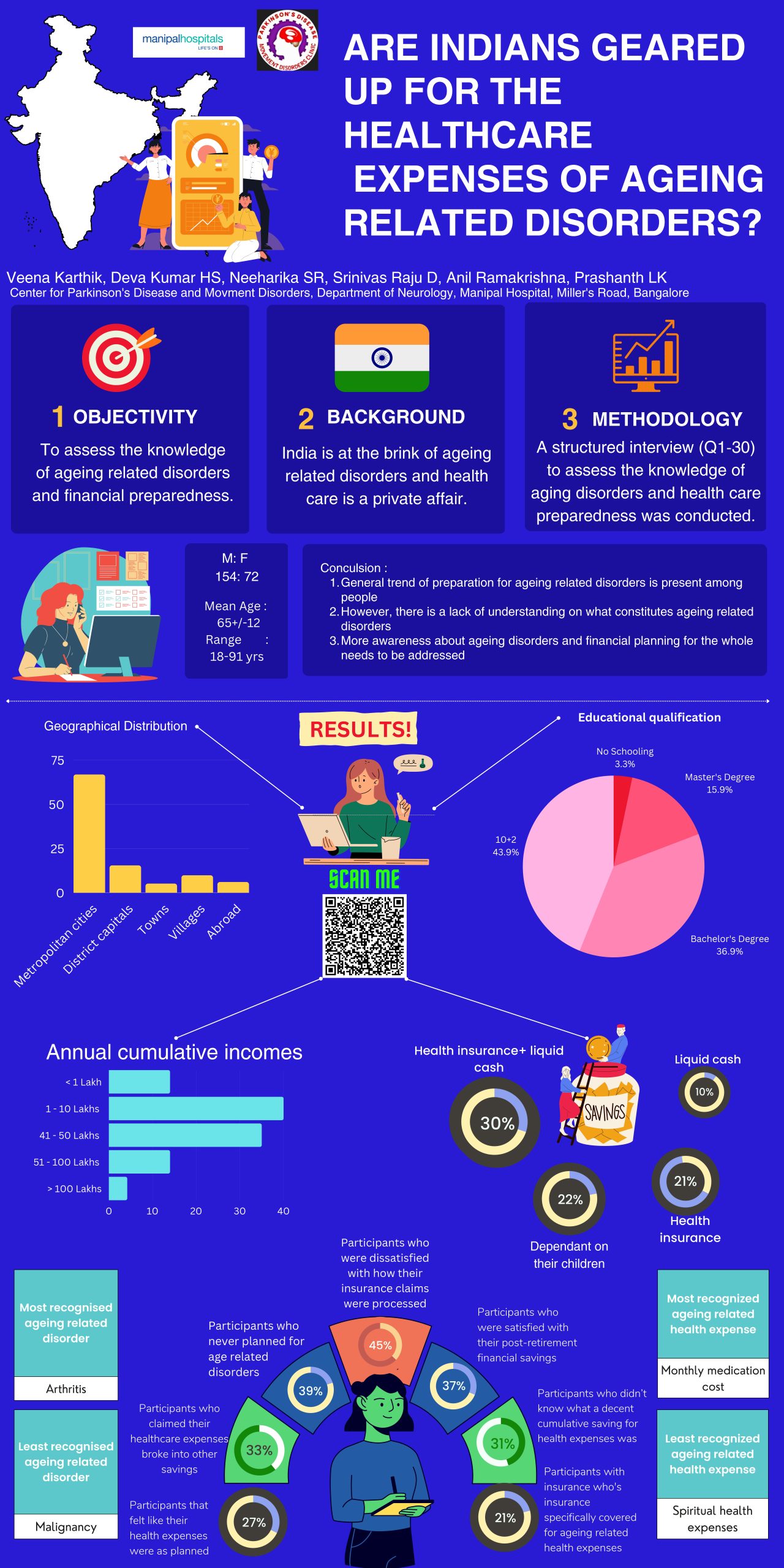Are Indians Geared Up for the Healthcare expenses of Ageing Disorders?

Objective : To assess the knowledge of ageing related disorders and financial preparedness.
Background : India is at the brink of ageing related disorders and health care is a private affair.
Methodology : An structured interview (Q1-30) to assess the knowledge of ageing disorders and health care preparedness was conducted.
Results : Responses of 214 (M:F=141:73) people with mean age of 65+/-12 yrs (Range: 18-91years) were analyzed. The education background varied in the cohort (No-schooling – 3.3%, to Masters degree – 15.9%). The cohort represented various geographical distribution (Villages – 9.8%, Towns – 5.1%, Districts – 15.4%, Metropolitan – 66.8% and Abroad – 2.3%) and Socio-economic backgrounds (Annual cumulative incomes – <1lakh – 14%, 1-10 Lakh – 40%, 41-50 lakhs – 35%, 51-100lakhs – 14%, >100lakhs – 4.2%). More than 50% of ageing related disorders were not commonly recognized. Arthritis (86%) and Malignancy (4.2%) were the most and least acknowledged ageing disorders respectively. Monthly medication costs (76%) and spiritual health expenses (15.4%) were the most and least recognized healthcare expenses categories. Only 4/10 ageing related health care expenses were recognized by >50% of respondents. 39% never specifically planned for ageing related health care. The most common assumption for average cumulative savings required was 5-10 lakh INR (19%). About 31%, didn’t have any idea of what should be a decent cumulative saving for health expenses. The savings were either in the form of liquid cash (10%), Health insurance (21%), or a mix (29%). About 22% of respondents were clearly dependent on children for their health expenses. Among the people who had insurances, only 21%, had their insurances specifically covered for chronic health expenses for out patient consults/therapies/daily medications. In the subgroup of patients who were 50 years and over (83%), 67% of respondents were dissatisfied with their post retirement health care savings, and 33% claimed that their health care expenses broke into other savings. Sub group analysis showed differences in knowledge and attitudes based on geographic and socio-economic status.
Conclusion : There is paucity of gauge of ageing related disorders and categories where health care expenses occur in chronic conditions. Albeit a general trend of preparation is present, but there are differences based upon geographical location and socioeconomic status.
